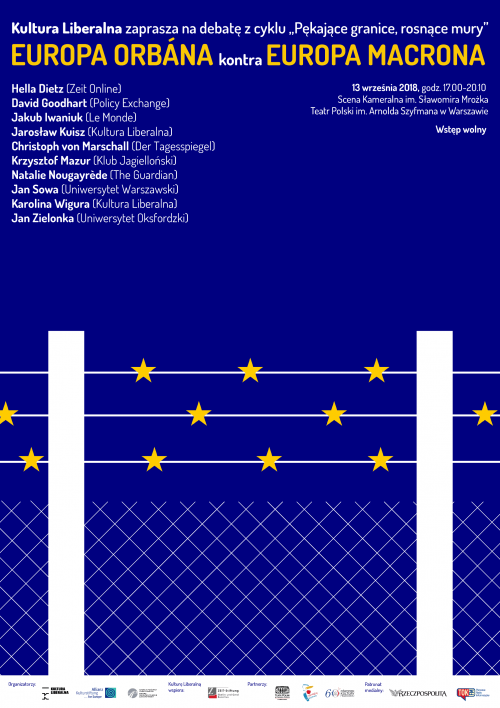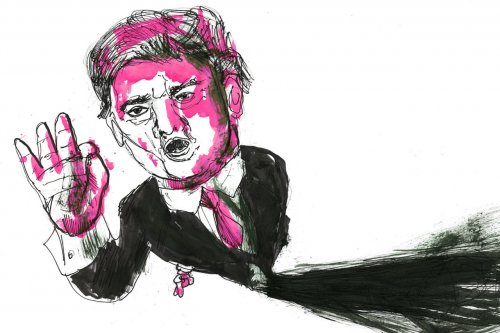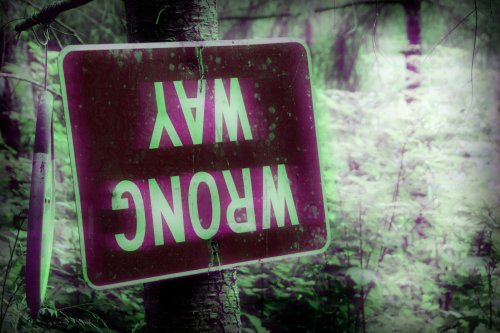Close up, the change we are witnessing in Europe right now can be hard to see. Ukraine, and Ukrainians, are always present in Poland. Polish culture and history cannot be understood without Ukraine; there has always been a Ukrainian minority in any independent Poland; hundreds of thousands of Ukrainians have been living and working in Polish homes, stores, and businesses over the last decade or so. What is obvious close-up is remarkable farther away; I wrote about the Poland-Ukraine symbiosis for the New York Times in 2014.
But if Ukraine has always been there, now we are witnessing a profound transformation, one that has been building for 35 years and is now evident to the world. In fact, of all the stunning transformations in Eastern and Central Europe over this period, I would say none has been more dramatic than that of Ukraine. We talk of the economic miracle, the Wirtschaftswunder, that transformed Germany after World War II. Today, we see the success, despite everything, of Ukraine’s no less impressive Gesellschaftswunder. What has changed, and how did we get here?
To recall another remarkable transformation: at the close of the Communist era, one could say that no nation more consistently rose up in opposition to Communism than did Poles. Those acts of resistance, among workers, intellectuals, youth, and the citizenry as a whole, made Poland a different place. Sure, the solidarity felt in 1980-81, or the euphoria of 1989, didn’t last forever, but at the same time the fact that efforts to stifle civic institutions and free speech have been less successful than in Hungary is a legacy of anti-Communist opposition. There is no shortage of bigotry and xenophobia in Poland today, but still there is a dramatic contrast to the attitudes one could measure in the Poland of the Sanacja, of the early post-war, or of 1968. Now, in 2022, one can tell a similar story about Ukraine, where three transformative mobilizations set the stage for the fourth, the one we are seeing now.
Ukraine was the key to the break-up of the Soviet Union in 1991. This was in part by chance: the Chernobyl explosion in 1986 was a powerful mobilizing force that stimulated environmental and civic movements across western Ukraine in particular. But the region was already primed for activism when glasnost’ began, thanks to religious and cultural movements, including one of the most politically-articulate hippie communities anywhere. Naturally, then, Ukraine was the first to declare independence after the failure of the Moscow putsch in August 1991. Still, civic activism was pretty small compared to the size and diversity of the country. The first decade of post-communism looked in some ways like a continuation of the past, with ex-Communists dominating politics and business.
The Orange Revolution of 2004 was a crucial next phase. Remember? It seems now a thousand years ago, when the post-1989 generation in Poland flocked to Kyiv to fight for democracy the way their parents had, singing along with Ukrainian friends and cheering for Viktor Yushchenko and Yuliia Tymoshenko. On the plus side, the occupation of the Maidan was an amazing socio-technical achievement, amplified by that international community. An occupied square (or a shipyard, for that matter) teaches vital lessons about tolerance, cooperation, and the democratic hierarchization of values. To survive cohabitation for weeks and weeks, one has to learn to accept different opinions and to decide which causes are priorities and which are not. On the down side, the protest was oriented around leaders—and the years after Yushchenko was elected President proved how risky it is to place trust and power in a few charismatic leaders.
And thus, less than a decade later, Ukrainians found that the man they had rallied to defeat was now President anyway, and was turning Ukraine away from Europe and toward Russia. The Euromaidan revolution that began in October 2013 revealed the further growth of Ukrainian civil society. Now they could rally for a cause, not just a leader. The scope and breadth of civic organization was far beyond what Kyiv had seen nine years earlier. True, there were some disturbing right-wing voices, too—but that is also part of the development of civic mobilization, as people learn how to manage and marginalize extremism. The beauty of the Euromaidan revolution was overshadowed by government repression, and by Putin’s invasion of Crimea and the Donbas, but Ukrainian civil society had taken a giant leap forward.
So is it any surprise that today, across Ukraine, citizens organize to help each other, work to gather and send information to the world, and train together to resist the Russian invasion? This is not a so-called spontaneous resistance – this is the product of Ukraine’s Gesellschaftswunder, thirty years of practicing and perfecting the lessons of civil society. If Putin wanted Ukraine, he needed to invade the 1985 version. The Ukraine of 2022 is somewhere else entirely.




